#wordpress seo plugins
Explore tagged Tumblr posts
Link
🚀 Essential WordPress Plugins to Boost Your Online Business: The Complete Guide 🎯 Why Your WordPress Site Needs Strategic Plugin Selection for Business Growth When it comes to building a successful online business, the Essential
0 notes
Text
10 Best SEO Plugins for WordPress to Boost Your Website Rankings

Is your website struggling to rank?
Are you tired of seeing your website buried on the second or third page of Google search results? Have you ever wondered why certain websites rank so high while yours does not receive the traffic it deserves? What if we told you that the best SEO plugin for WordPress may be the key to maximizing your website's potential?
Let's face it: SEO can be overwhelming, especially if you're new to it. But here's some good news: with the correct tools, you can turn your WordPress site into an SEO powerhouse.
In this blog, we'll walk you through the top ten best SEO plugins for WordPress, explaining how they operate and why they're so important for improving your rankings. Along the process, we'll provide real-world statistics and advice to keep things interesting and interactive.
1. Yoast SEO, The Ultimate SEO Assistant.
Have you heard about Yoast SEO? If not, you're losing out on one of the most popular SEO plugins, which powers more than 5 million websites worldwide.
The Best SEO Plugin for WordPress:
• Uses a simple traffic light system (red, orange, green) to optimize posts.
• Checks content for readability and user-friendliness.
• Generates XML sitemaps for improved indexing.
How confident are you in your present content's SEO performance? Yoast SEO eliminates guesswork.
2. All in One SEO (AIOSEO): Suitable for Beginners
Are you just beginning your SEO journey? AIOSEO is ideal for individuals looking for a simple and uncomplicated plugin. For someone who is starting their SEO journey, it is the best SEO plugin for wordpress.
Key Features:
• Easy setup wizard for quick setting.
• Use on-page optimization tools without technical competence.
• Use schema markup to improve search results visibility.
Did you know? AIOSEO helps over 3 million websites improve their search rankings.
A Quick Tip: Do you optimize for local SEO? AIOSEO provides specific tools for successfully targeting local customers.
3. Rank Math: The SEO Game Changer
Are you looking for more advanced features without breaking the bank? Rank Math is a modern, extremely customisable plugin.
Why Users Love It:
• The free edition offers sophisticated capabilities such as schema markup and Google Search Console integration.
• Allows multiple focus keywords per post.
• AI-powered ideas to enhance your content.
Quick stat-Rank Math is quickly gaining popularity, with over 1.5 million active installations and counting!
Have you ever attempted optimizing for numerous keywords at once? Rank Math makes things simple and effective.
4. SEOPress is both affordable and effective.
If you're on a tight budget, SEOPress could be the best WordPress SEO plugin for you. It won't be heavy on your pocket.
What It Provides:
•Unlimited keyword optimization.
• Implemented social media integration to enhance post sharing.
• Provide white-label features for agencies managing many sites.
Quick Thought: What is your SEO budget? SEOPress provides premium functionality for a fraction of the price of competitors.
5. The SEO Framework is lightweight and fast.
Is your website slow to load because of hefty plugins? The SEO Framework is a lightweight option that does not skimp on features.
Ideal for:
• Speedy and simple websites.
• Automated SEO optimizations, including meta descriptions and canonical URLs.
• Pre-configured parameters reduce the need for manual adjustments.
Is your existing SEO plugin slowing down your website? The SEO Framework ensures that you remain fast and efficient.
6. WP Meta SEO: Ideal for Meta Tag Management.
Meta tags are critical for SEO performance, but manually updating them can be time-consuming. WP Meta SEO makes this approach easier.
You'll enjoy the following features:
• Bulk editing of meta titles and descriptions.
• Automatically generates sitemaps for search engines.
• Integration with Google Analytics to monitor performance.
When was the last time you updated your meta tags? WP Meta SEO allows you to update them in bulk with simplicity.
7. Redirection: Handle Broken Links Efficiently
Were you aware that broken links might hurt your SEO rankings? Redirection is the best SEO plugin for WordPress that handles 301 redirects and corrects 404 issues.
What It Does:
• Automatically detects and resolves broken links.
• Generates thorough reports on link errors.
• Redirects obsolete URLs for a smoother user experience.
Fixing broken links can increase your website's SEO score by up to 15%, according to industry experts.
8. Broken Link Checker: Your Site's Watchdog
Similar to Redirection, Broken Link Checker checks your website for internal and external link issues.
Why You Need It:
• Prevents users from accessing error sites.
• Improves website reputation and user experience.
• Sends email notifications for broken links to prompt immediate action.
How often do you check for broken links on your website? This plugin automates the process, which saves you time.
9. Squirrly SEO: AI & SEO
Are you intrigued about AI-powered tools? Squirrly SEO uses AI and user-friendly tools to aid your optimization efforts.
Key features include personalized SEO chores based on your website's demands.
• Real-time performance tracking.
• Utilize the built-in keyword research tool for more targeted content.
Did you know? AI-driven SEO techniques enhance ranks 30% faster than manual methods.
Consider using an AI technology to guide your SEO approach step-by-step. Squirrly makes this feasible.
10. Schema Pro: Dominate Rich Snippets.
Do you want to make your website stand out in search results? Schema Pro allows you to include rich snippets such as FAQs, reviews, and star ratings.
Why It's a Must-Have:
• Automatically generates schema markup for pages and posts.
• Improves search results' visual appeal, leading to higher click-through rates.
• Works well with other SEO tools.
Have you noticed that certain Google results include star ratings or additional information? Schema Pro can also make this happen for your website!
Why Are SEO Plugins Essential for WordPress?
Best SEO plugins for wordpress help to ease the complex process of search engine optimization. Here's why you need them.
• Improved Rankings: SEO plugins offer practical insights to boost your ranking.
• Use time-saving tools to automate processes such as sitemap development and meta tag
optimization.
• Improve User Experience: Make content engaging and accessible to everybody.
Stat Spotlight: Implementing SEO plugins leads to a 25% boost in traffic after three months.
How to select the best SEO plugin for WordPress.
Not sure which plugin to choose? Here is a brief checklist to find the best SEO plugin for WordPress:
1. Does it provide the necessary functionality, such as keyword optimization and schema markup?
2. Is it simple to use, especially for beginners?
3. Does it meet your budget?
4. Can it scale with your website's growth?
Why combine multiple SEO plugins?
Did you know that using a combination of best SEO plugins for wordpress might give your WordPress site an added advantage? You can, for example, use Yoast SEO to optimize your content and Broken Link Checker to manage link issues.
Why combining best SEO plugins for wordpress works:
• Each plugin focuses on unique parts of SEO.
• Using numerous plugins covers all bases, including meta tags and site speed.
•Some plugins complement each other and function well together.
Have you tried combining plugins to meet your SEO needs? What combo works best for you?
The importance of regular updates and maintenance.
One common error that website owners make is to install an SEO plugin and then forget about it. However, search engine algorithms are constantly changing, and your SEO approach should be updated accordingly.
Did you know?
Google adjusts its search algorithm approximately 500-600 times every year! Staying on top of these changes is critical.
To stay up-to-date with the latest features, update your plugins often.
• Monitor site performance and make necessary improvements.
• Stay informed about SEO trends to stay ahead of the competition.
Quick Tip: When was the last time you updated your SEO plugins? Take a moment to check that everything is up to date.
Free vs. Paid Plugins: Which Should You Choose?
Another prevalent concern is whether to invest in paid plugins or continue with free ones.
Free Plugins:
• Ideal for beginners.
• Offer basic functionality such as keyword optimization and XML sitemaps.
• Suitable for tiny websites and blogs.
Quick Tip: Try a free plugin first. The majority of the plugins featured here include free versions with a wide range of functionality to get you started.
Paid plugins:
•Provide sophisticated capabilities like as schema markup, content insights, and AI suggestions. •They also typically include premium support and updates.
• Suitable for enterprises and large websites with sophisticated SEO requirements.
Quick Question: Do you use a free or premium plugin? What has been your experience this far?
5 Quick SEO Tips You Can Apply Now
1. Prioritize High-Quality material: Search engines value material that is useful, interesting, and original.
2. Optimize photos: Adding alt text to photos can enhance SEO.
3. Use Internal Links: Linking to other pages on your site improves navigation and SEO.
4. Target Long-Tail Keywords: Long-tail keywords are less competitive and more relevant to user inquiries.
5. Use Analytics to Track Performance: Plugins like MonsterInsights can track traffic and SEO performance.
Quick challenge: How many of these tips have you implemented? Begin with one today and track your progress!
Frequently asked questions about SEO plugins for WordPress.
1. Why should I use an SEO plugin for WordPress?
An SEO plugin makes the optimization process easier by giving tools for increasing visibility, ranks, and website performance in search engines.
2. Do SEO plugins guarantee first-page rankings?
No, SEO plugins can help you optimize your website, but rankings are determined by criteria such as content quality, competition, and overall strategy.
3. Are there any free WordPress SEO plugins?
Yes, plugins like as Yoast SEO, All in One SEO, and Rank Math provide free versions with advanced functionality for basic optimization.
4. What are the differences between Yoast SEO and Rank Math?
Yoast SEO focuses on simplicity and readability, whereas Rank Math provides more advanced tools such as multiple keyword optimization and AI-powered advice.
5. Do SEO plugins slow down websites?
SEO plugins have little impact on performance when correctly set. Lightweight solutions, such as The SEO Framework, are great for speedier websites.
6. How can SEO plugins help with content optimization?
They review your material for keywords, readability, and structure and make recommendations to improve rankings and user experience.
7. Do SEO plugins help with image optimization?
Yes, several plugins allow you to add alt text, compress photos, and increase loading speed to improve SEO.
8. How do SEO plugins manage broken links?
Specialized plugins, such as Broken Link Checker and Redirection, detect and repair broken links to improve user experience and SEO.
9. Do SEO plugins work on e-commerce websites?
Yes, SEO plugins like AIOSEO and Rank Math provide specialized tools for optimizing e-commerce sites, such as product schema and metadata.
10. Are paid SEO plugins worth the money?
Premium plugins provide extra capabilities such as priority assistance, additional keyword tracking, and expanded analytics, making them valuable for larger websites or organizations.
The bottom line: Your SEO journey begins here.
Selecting the best SEO plugin for WordPress is one of the most important decisions you can make to improve your website’s visibility and rankings on search engines. Whether you’re running a blog, a small business website, or an e-commerce store, the right SEO plugin can make a significant difference in how your site is optimized and how easily search engines can crawl and index your content. By carefully choosing from the best SEO plugins for WordPress, you ensure that you have the tools necessary to manage your on-page SEO, optimize metadata, generate sitemaps, and improve your site’s overall performance.
The best SEO plugin for WordPress will provide you with comprehensive features that cater to all levels of SEO expertise. For beginners, plugins like Yoast SEO or All in One SEO offer easy-to-use interfaces and helpful guidance. For more advanced users, Rank Math or SEOPress can provide additional customization options and in-depth tools for maximizing optimization. No matter your website’s needs, there is a plugin designed to help you get the most out of your SEO efforts.
By combining the best SEO plugin for WordPress with strategic content creation, performance enhancements, and regular SEO audits, you can create a website that not only ranks well but also attracts more traffic, enhances user experience, and drives conversions. Start exploring the best SEO plugins for WordPress today, and watch your website rise in search engine results, bringing more visitors and potential customers to your site.
Take action now and harness the full potential of your website with the power of the best SEO plugin for WordPress!
0 notes
Text
Semrush vs Ahrefs vs Rank Math SEO: Comprehensive Comparison and Guide
In the dynamic world of SEO (Search Engine Optimization), the tools you choose can significantly impact your online success. Among the top contenders, SEMrush, Ahrefs, and Rank Math SEO stand out, each offering unique features and capabilities. This guide will help you understand each tool’s strengths and weaknesses. It will enable you to make an informed decision for your SEO needs. Overview…
#ahrefs#on-page seo tools#rank math seo#rank math vs ahrefs#rank math vs semrush#semrush#semrush vs ahrefs#seo analysis#seo tools comparison#wordpress seo plugins
0 notes
Text
How WordPress Plugin Development Services Can Increase Revenue
Boost your website's functionality with expert WordPress plugin development services from HireWPGeeks. Our custom plugins are designed to enhance user experience, automate processes, and improve SEO performance, ultimately driving more revenue for your business. Trust HireWPGeeks to deliver tailored solutions that meet your specific needs and help your site stand out.
#WordPress plugin development#Custom WordPress plugins#WordPress plugin services#Plugin development for WordPress#WordPress SEO plugins
0 notes
Text
Top WordPress Plugins to Elevate Your Website in 2024
WordPress is one of the most versatile and widely used platforms for website development. Whether you are a beginner setting up your first blog or an advanced developer building a high-traffic website, WordPress offers a vast library of WordPress plugins that allow you to easily extend your website’s functionality. The right plugins can dramatically improve your website’s performance, security, SEO, and user experience, making them indispensable tools in your digital toolbox.
In this blog, we’ll take a closer look at some of the most important and powerful WordPress plugins that every site owner should consider using in 2024. Let’s break down the different categories of plugins that can help you get the most out of your WordPress site.
1. Essential Security Plugins
Security is one of the top concerns for any website owner. Ensuring your site is protected from hackers and malware is crucial for maintaining credibility and protecting sensitive information.
Wordfence Security Wordfence is one of the most popular WordPress plugins for security. It offers real-time traffic monitoring, firewall protection, and malware scanning. Its easy-to-use interface makes it a favorite among beginners and seasoned developers alike. Additionally, it provides login security features to prevent brute-force attacks.
Sucuri Security Another great security option is Sucuri. This plugin provides website scanning, malware cleanup, and firewall protection. It also improves your site’s speed by leveraging a global Content Delivery Network (CDN). Sucuri is a top choice for those looking for robust protection.
2. SEO Plugins for Better Visibility
Search engine optimization (SEO) is the key to driving organic traffic to your website. By improving your site’s ranking on search engines like Google, you increase the chances of attracting new visitors.
Yoast SEO Yoast SEO is a game-changer for anyone looking to improve their site’s search engine ranking. This widely used WordPress plugin makes it easy to optimize every page and post on your site. Yoast provides actionable insights, like keyword optimization, readability checks, and meta descriptions, ensuring your content is search-engine friendly.
All-in-One SEO Pack Another powerful SEO tool is the All in One SEO Pack. This WordPress plugin is user-friendly and great for beginners who want to manage SEO without dealing with complicated settings. It helps optimize titles, generates XML sitemaps, and integrates seamlessly with social media platforms to enhance your website’s online presence.
3. Performance and Speed Optimization Plugins
A slow website can frustrate users and lead to higher bounce rates. Improving your website’s speed is crucial, especially in today’s fast-paced digital landscape. The following WordPress plugins help ensure your site runs quickly and efficiently.
WP Rocket WP Rocket is a premium caching plugin that boosts your website's performance by reducing load times. Its simple setup and user-friendly interface make it perfect for beginners. By enabling page caching, preloading content, and compressing files, WP Rocket significantly improves site speed.
W3 Total Cache Another excellent option is W3 Total Cache. This free WordPress plugin optimizes website performance through caching, browser caching, and file compression. It also integrates with CDNs to further enhance speed. W3 Total Cache is ideal for developers looking for more control over their website's performance.
4. Design and Customization Plugins
Design is crucial to attracting and retaining visitors. You want your website to be visually appealing and user-friendly. Here are some of the best WordPress plugins for design and customization.
Elementor Elementor is a powerful drag-and-drop page builder that allows you to design beautiful, professional-looking websites without writing a single line of code. This WordPress plugin offers a range of design features, from responsive templates to custom widgets. Whether you're building a landing page or designing an entire site, Elementor makes the process simple and flexible.
Beaver Builder Beaver Builder is another great page builder. With its easy-to-use interface, this plugin allows you to create stunning pages quickly. Like Elementor, it’s a drag-and-drop builder, but it’s often preferred by developers who want a more streamlined design process without overwhelming features.
5. E-commerce Plugins
For those running online stores, integrating e-commerce functionalities is essential. Thankfully, WordPress plugins offer powerful solutions to enhance your store's features.
WooCommerce WooCommerce is the go-to plugin for creating online stores on WordPress. It offers endless customization options, allowing you to create a fully functional store, and manage products, payments, and shipping. With thousands of extensions, WooCommerce is the most flexible and comprehensive WordPress plugin for e-commerce websites.
Easy Digital Downloads If your business focuses on selling digital products, Easy Digital Downloads is the plugin to use. It simplifies the process of selling digital goods like eBooks, music, and software. This plugin is lightweight, intuitive, and integrates with many popular payment gateways, making it easy to manage your digital storefront.
6. Form Builder Plugins
Having contact forms on your website is essential for collecting information, leads, and feedback. Here are a couple of top form builder WordPress plugins.
WPForms WPForms is one of the most user-friendly contact form plugins. It allows you to create beautiful forms with its drag-and-drop builder. This plugin integrates seamlessly with email marketing services and payment gateways, making it a versatile tool for both small businesses and large enterprises.
Gravity Forms For those looking for advanced form-building options, Gravity Forms is a great choice. This WordPress plugin offers features like conditional logic, file uploads, and multi-page forms. It’s perfect for those who need more complex form functionality on their site.
0 notes
Text
10 Essential WordPress Plugins to Boost Your Site's Performance and SEO
WordPress is a great tool for making and managing websites. With the right plugins, you can make your site run better, improve how users experience it, and get more visibility in search engines. We’ll look at 10 key WordPress plugins that can lift your website to the next level1.ok> These plugins help with site speed, security, SEO, and managing online stores. Using these tools right can make…
#Best WordPress performance plugins#Boost website speed#SEO tools for WordPress#Site performance optimization#WordPress SEO plugins
0 notes
Text
Create Stunning Sliders Without Coding
Transform your website with Slider Revolution! This powerful WordPress plugin lets you create stunning sliders, carousels, and dynamic hero sections—all without coding. Choose from 250+ templates and easily customize them with a drag-and-drop editor.
In the fast-paced digital world, your website’s visual appeal plays a crucial role in engaging visitors and boosting conversions. Slider Revolution is the most advanced WordPress plugin. It empowers you to design responsive sliders, carousels, and hero sections. You can even create full one-page websites without writing a single line of code. With its intuitive drag-and-drop interface, even…
#Digital Marketing#Drag-and-Drop Editor#Dynamic Content#Interactive Sliders#Responsive Design#SEO Optimization#Slider Revolution#User Engagement#Web Design Tools#Web Development#Website Design#WordPress Plugin
2 notes
·
View notes
Text
7 Must-Have WordPress Plugins for 2025
7 Essential WordPress Plugins I Always Install (2025 Edition)
Looking to enhance your WordPress site? Here are the 7 must-have plugins I recommend for 2025:
Rank Math SEO – Effortless SEO optimization.
WP Rocket – Boost your site speed with caching.
Elementor Pro – Easily design stunning pages.
WPForms – Create interactive forms to engage visitors.
Akismet Anti-Spam – Keep spam at bay.
UpdraftPlus – Secure and back up your data.
WooCommerce – Build and manage online stores seamlessly.
These plugins will supercharge your site’s performance, security, and functionality!
Read more: 7 Essential WordPress Plugins

#WordPress#WordPress Plugins#Web Design#SEO#Website Optimization#Ecommerce#Blogging Tools#Online Business#Website Security#2025 Tech
3 notes
·
View notes
Text
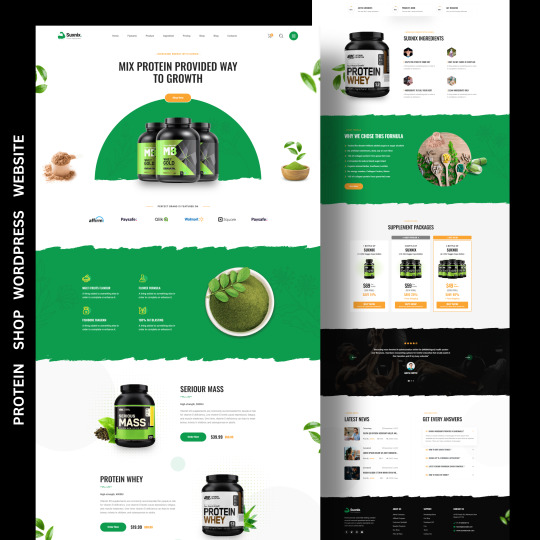

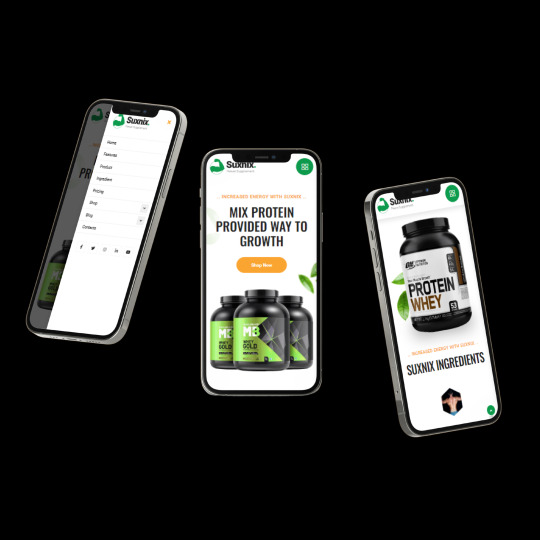

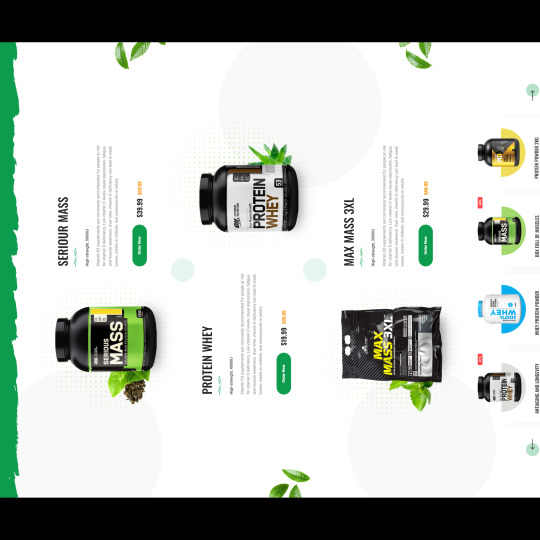
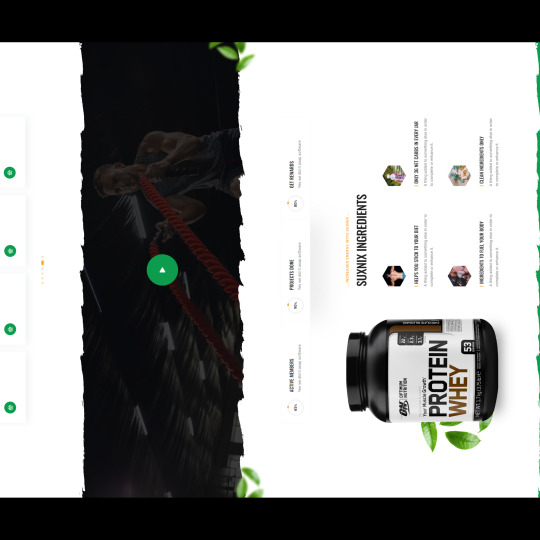
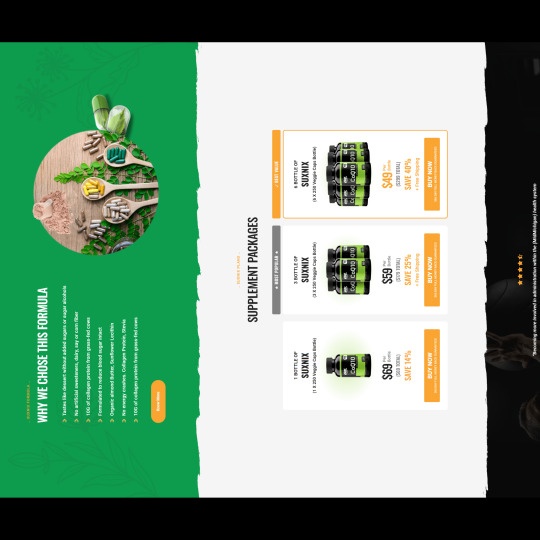


PROTEIN SHOP WordPress WEBSITE Follow @ppmsourav@pixelparkmedia
Designed by : https://shorturl.at/byBJ3 Check out their incredible work on this link ☝🏻
➡ DM for professional WordPress website . . . . . . .
#website#wordpress#wordpress themes#webdevelopment#web design#seo#web developers#wordpress development#website optimization#wordpress web design#wordpress website#wordpress plugins#ecommerce website development#web development#website design#website traffic#website development#website seo#software#digital marketing
4 notes
·
View notes
Text
Google Core Web Vitals for WordPress: How to Test and Improve Them
Table of Contents
· What Are Google Core Web Vitals?
· Do Core Web Vitals Affect SEO as a Ranking Factor?
· How to Test & Measure Core Web Vitals on WordPress
· How to Improve Core Web Vitals on WordPress
· Tips to Boost Your WordPress Performance if Core Web Vitals Don’t Improve
· Start Optimizing Core Web Vitals on WordPress Today
Heard about this new Google Core Web Vitals project but not sure how it connects to your WordPress site? Or maybe you have no idea what the Core Web Vitals project is and why it matters for WordPress?
Either way, this post is going to cover everything you need to know about Core Web Vitals and WordPress. We’ll tell you what they are, how to test them, and how to improve your site’s scores to create a better user experience
What Are Google Core Web Vitals?
Core Web Vitals are a new initiative from Google designed to measure and improve user experience on the web. Instead of focusing on generic metrics like how long it takes your entire website to load, Core Web Vitals focus on how your WordPress site’s performance connects to delivering a high-quality user experience.
Users care about how fast they can start interacting with a page. That’s precisely what the Core Web Vitals metrics aim to measure.
Currently, there are three Core Web Vitals: Largest Contentful Paint (loading performance), Cumulative Layout Shift (visual stability), and Interaction to Next Paint (responsiveness).
According to Google, these metrics are the most important ones for providing a great user experience.
If you think that these names are confusing, and if you tend to mix one metric with another, don’t worry! We’ll explain each metric in the easiest way. We want you to understand what each Core Web Vital means and its impact on user experience.
It’s the first step for improving the scores and your overall SEO and WordPress performance.
Explaining Largest Contentful Paint (LCP)
Largest Contentful Paint (LCP) measures how long it takes for the most meaningful content on your site to load – that’s usually your site’s hero section or featured image.
According to Google, how long it takes for a page’s main content to load affects how quickly users perceive your site to load.
Practical example: you land on a page and don’t see the top image fully displayed right away. You would be annoyed, right? You would even think about leaving the page right away. Here’s why the Largest Contentful Paint metric is closely related to user experience — more than the overall site’s loading time.
The LCP “element” is different for each site, and it’s also different between the mobile and desktop versions of your site. Sometimes the LCP element could be an image, while other times, it could just be text..
If you’re wondering what a good LCP time is, here are Google’s thresholds:
· Good – Less than or equal to 2.5 seconds
· Needs Improvement – Less than or equal to 4.0 seconds
· Poor – More than 4.0 seconds.
On a side note: LCP is very similar to First Contentful Paint (FCP), another metric included in PageSpeed Insights.
The key difference is that LCP measures when the “main” content loads. FCP is focused on just when the “first” content loads — which could be a splash screen or loading indicator, that’s a less relevant user-experience element.
Explaining Cumulative Layout Shift (CLS)
The Cumulative Layout Shift (CLS) measures how much your site’s content “shifts” or “moves around” as it loads.
Practical example: you’re about to click on a link or CTA, and you can’t do it because your content has just gone down after being loaded. You have a terrible user experience, and that’s a layout shift. The same goes when you accidentally click the wrong button because the late-loading content caused a button to shift.
Or, have you ever been on a news website where the content in the article keeps shifting around as the site loads ads, and you are unable to keep reading? That’s a layout shift, too.
You can see from yourself how the cumulative layout shift is super annoying for users and how they will have a poor experience.
Here’s how Google defines the CLS scores:
· Good – Less than or equal to 0.1 seconds
· Needs Improvement – Less than or equal to 0.25 seconds
· Poor – More than 0.25 seconds.
Explaining Interaction to Next Paint (INP)
Interaction to Next Paint (INP) is a webpage responsiveness metric measuring the latency of all user interactions on a page. Responsiveness means pages react quickly to user interactions. When a page responds to an interaction, the browser promptly displays visual feedback in the next frame to confirm the interaction’s success – this is what users expect.
Here’s how Google defines INP scores:
· Good – Less than or equal to 200 ms
· Needs Improvement – Between 200ms and 500 ms
· Poor – More than 500 ms.
Do Core Web Vitals Affect SEO as a Ranking Factor?
In June 2021, Google will start using Core Web Vitals as a ranking factor – therefore, these metrics could affect your SEO performance.
Core Web Vitals will be part of the new Page experience signals, together with HTTPS-security, safe-browsing, mobile-friendliness, and intrusive interstitial guidelines.
Core Web Vitals will affect both mobile and desktop organic results, as well as whether or not your site appears in Top Stories. Previously, your site needed to use AMP to appear in Top Stories. That will no longer be the case when Google rolls out the change, but your site will need to meet specific minimum Core Web Vitals scores to appear in Top Stories.
What’s more, it seems like all Core Web Vitals metrics need to be met to improve organic ranking. And the Core Web Vitals score for noindexed pages may matter, too.
In short: if you care about your SEO performance, improving your Core Web Vital scores is now mandatory.
How to Test & Measure Core Web Vitals on WordPress
You can test and measure the Core Web Vitals with all of Google’s tools for web developers, from PageSpeed Insights to the Chrome DevTools, the CrUX Report, and much more.
As you can see in the image below, Google’s tools measure all the three metrics — except for Chrome DevTools and Lighthouse.
Google’s tools to measure Core Web Vitals
If you prefer using another performance tool, you should know that both GTmetrix and WebPageTest have started to use the Lighthouse performance score.
Keep in mind that both tools only provide you with the Largest Contentful Paint and the Cumulative Layout Shift scores.
The reason is always the same: the First Input Delay can only be measured with real user interaction, and these tools rely on the Lighthouse Lab Data.
Let’s now go over two of the most popular tools: PageSpeed Insights and Search Console. The first one helps you detect individual page issues; the other allows you to diagnose sitewide problems.
How to Test and Measure the Core Web Vitals with PageSpeed Insights
The easiest way to test your site’s pages against Core Web Vitals is via Google PageSpeed Insights.
Google’s tool provides data on all three metrics and gives specific recommendations to improve their performance.
The Diagnostics section will become your best ally to get a better score!
Just plug in your site’s URL, and you’ll get the Core Web Vitals assessment:
You should keep in mind to always check both the mobile and desktop results. Your Core Web Vitals metrics will differ between the two. Keep in mind that the mobile score is the most relevant and the most challenging.
Let’s now look at how you can use PageSpeed Insights to identify the Core Web Vitals elements that need improvement.
Discovering the Largest Contentful Paint Element with PageSpeed Insights
As we explained, the LCP score measures how long it takes for the most meaningful element to become visible to your visitors.
To discover your site’s Largest Contentful Paint element, scroll down to the Diagnostics section and expand the Largest Contentful Paint element tab.
There, Google will display the HTML for the element that it’s using to measure LCP.
For example, on the desktop version of the WordPress.org homepage, the LCP element is an image:
The LCP element from the desktop – PageSpeed Insights
However, on the mobile version of the site, the LCP element is the subheading text:
The LCP element from the mobile – PageSpeed Insights
Discovering the Cumulative Layout Shift Elements with PageSpeed Insights
Quick recap: the Cumulative Layout Shift deals with how your site loads and whether or not your content “moves around” as new content is loaded.
To find the individual elements on your site that are “shifting” and affecting your score, go to the Avoid large layout shifts section in the Diagnostics area:
The CLS elements – PageSpeed Insights
How to Read the Core Web Vitals Report on Search Console
If you want to diagnose issues with your site as a whole, you should use the Core Web Vitals report in Google Search Console.
The report is based on an aggregate of real users’ data from CrUX. For this reason, the data included in the report could take a while before reporting issues. That’s why the Lab Data from Lighthouse is always valuable.
That said, the Core Web Vitals report is great to identify the groups of pages that require attention – both for desktop and mobile.
The Core Web Vitals report in Search Console – Overview
Once you open the report, you’ll find a Details tab that groups the URL performance by several criteria:
· Status (Poor or Need improvement)
· Metric type (e.g., CLS issue: more than 0.25 (desktop))
· URL group (the list of URLs with similar performance).
Once you have fixed the URLs that needed an improvement, you’ll also be able to click on the Validation column and move forward with the “Validate Fix” option. Keep in mind that the validation process takes up to two weeks — be patient!
The Core Web Vitals report in Search Console – Details tab
How to Measure Core Web Vitals with Chrome Extensions
If you’re looking for a useful Chrome Extension, you could choose Web Vitals.
It gives you the Core Web Vital scores for any page you’re browsing:
Web Vitals Chrome extension
You may also want to try CORE Serp Vitals, which shows you the Core Web Vitals results directly on the SERP. Remember that you need to enter a Chrome UX Report API key to let the extension work.
How to Improve Core Web Vitals on WordPress
Now for the critical question — if you aren’t currently meeting Google’s recommendations for the three Core Web Vitals metrics, how can you optimize your WordPress site to improve your Core Web Vitals scores?
The strategies are different for each metric. Most optimizations involve implementing WordPress performance best practices, though with a few points of emphasis — and that’s why choosing the best WordPress caching plugin will help you with no effort from your side.
Watch the video to understand how to optimize your Core Web Vitals, and keep reading to learn more about it.
Please note that the video still includes the former Core Web Vital, the First Input Delay. As you’ll read later in the article, optimizing INP does not differ from optimizing FID. Simply, INP has a broader scope than optimizing only the First Input Delay.
How to Improve Largest Contentful Paint on WordPress
Optimizing for Largest Contentful Paint is the most straightforward metric as it’s pretty much entirely WordPress performance best practices:
1. Set up page caching. Page caching speeds up how quickly your server can respond and reduces the server response times (TTFB). Did you know that RockePressenables this automatically?
2. Optimize browser caching. You should set the right option for the static files that your browser keeps in its cache. By doing so, you’ll address the “Serve static assets with an efficient cache policy” PageSpeed Insights recommendation. Guess what? RockePressenables the optimal expiration length automatically.
3. Optimize your images. A lot of times, your LCP element will be an image. Optimizing your images will speed up your site and address PageSpeed recommendations such as “Properly size images”, “Defer offscreen images”, “Serve images in next-gen formats”, and “Efficiently encode images”. You can use Imagify to optimize WordPress images automatically.
4. Optimize your code. Loading unnecessary CSS or JavaScript files before your main content will slow down the loading time. You can fix this by eliminating render-blocking resources on your WordPress site. You should also minify CSS and Javascript files and remove unused CSS. Optimizing your code will help you address the “Avoid chaining critical requests” PageSpeed recommendation. Once again, you’ll get most of the job done by setting these optimizations up in the File Optimization tab in WP Rocket.
5. Use server-level compression. Using Gzip or Brotli compression will reduce your site’s file size, which speeds up LCP and addresses the “Enable text compression” recommendation. RockePress automatically enables Gzip compression.
6. Use preconnect for important resources. Preconnect lets you establish important third-party connections early and addresses the “Preload key requests” and “Preconnect to required origins” recommendations.
7. Use a content delivery network (CDN) for global audiences. If you have a global audience, a CDN can speed up your LCP time for visitors around the world. It’s another effective way to reduce the Time to First Byte (TTFB)
.
8. The easiest way to implement most of these best practices is to use RocketPress. RockePress will automatically apply page caching and server-level compression as soon as you activate it. It also includes other features to help you optimize your site’s code and performance, all of which improve your LCP time.
Don't Miss Out!
The Core Web Vitals Cheat Sheets are the easiest and fastest way to learn how to optimize LCP, INP, and CLS and prioritize your performance tasks.
How to Improve Cumulative Layout Shift on WordPress
Optimizing for Cumulative Layout Shift is a little more technical because it deals more with your site’s code.
Some of the most common problems and fixes are:
1. Fix images without dimensions – if you add images via the WordPress editor, WordPress automatically adds dimensions for you. However, make sure to add dimensions if you’re manually adding images anywhere using your code. You’ll then address the best practice about serving scaled images.
2. Fix ads, embeds, and iframes without dimensions – just as with images, loading embeds without dimensions can also cause problems. Make sure to always specify sizes when using these embeds. Or, if placing ads, make sure to “reserve” space for each ad.
3. Optimize web fonts (FOIT/FOUT) – if you’re using custom web fonts, a late-loading font can cause issues such as Flash of Invisible Text (FOIT) or Flash of Unstyled Text (FOUT). As a result, you won’t follow the PageSpeed recommendation: “Ensure text remains visible during webfont load”. One strategy to fix this is web font preloading. If you need help, keep in mind that RockePressautomatically optimizes Google Fonts. As for other fonts, the plugin helps you solve the issue through the Minify or Combine CSS option — already mentioned for improving LCP (Optimize your code).
4. Be careful with injected content – don’t dynamically inject any content above existing content unless it’s in response to a user’s action.
How to Improve Interaction to Next Paint on WordPress
Optimizing INP means speeding up the page’s responsiveness. The former Core Web Vital, First Input Delay, was limited to the first interaction and only measured the input delay. On the other hand, INP measures interaction throughout the page’s lifecycle and takes into account more elements: input delay, processing time, and presentation delay.
INP is especially related to optimizing the main thread which needs to be available when a user interaction happens.
You should start by eliminating unnecessary JavaScript, if possible.
By doing so, you’ll address PageSpeed recommendations such as “Reduce JavaScript execution time”, “Remove unused JavaScript”, and “Minimize main thread work”. The Delay Javascript Execution feature and the Load Javascript deferred option provided by RockePresswill help you deal with these issues.
As for the LCP, optimizing your code and images, using server-level compression, and using preconnect for important resources can help you improve your INP score.
In general, improving INP can be difficult if you’re not a developer. That’s why RockePresscan help you save time and energy. If you want to dig deeper, though, Google has a good explainer on the more technical parts of optimizing this metric.
Tips to Boost Your WordPress Performance if Core Web Vitals Don’t Improve
What if you start applying the PageSpeed Insights recommendations and your Core Web Vitals grades are not as good as you would expect?
Take a look at the suggestions we listed for you. Your WordPress performance will likely improve by following these tips:
1. Choose a fast hosting provider. Hosting affects server responsiveness, which plays a significant role in the LCP grade. If you’re using shared hosting, you may want to consider switching to a dedicated one and get excellent server performance.
2. Don’t overlook image optimization. We’ve mentioned above how image optimization can affect both LCP and INP grades. These scores are also the most relevant ones for the overall PageSpeed score.
3. Use only essential and lightweight plugins, and optimize their performance. WordPress websites tend to use many plugins. The majority of these plugins impact the front end because of their JavaScript files – and you know how JS files are critical for your site’s performance. Let’s say that your site uses a plugin to create the contact form page. Even though the plugin is used for only a page, the plugin will load the CSS and JS files across the entire site — and these are 100% unnecessary files! You should use your plugins only on the dedicated pages. Asset CleanUp and Perfmatters (Script Manager feature) will help you enable your plugins only on the relevant pages and solve these JavaScript file issues.
4. Take advantage of your page builder. Your page builder could also help you manage your file optimization. Check it out!
Start Optimizing Core Web Vitals on WordPress Today
Now you know what Core Web Vitals mean and how they affect performance. It’s time to optimize your grades!
Not a RockePress customer yet? Save yourself time and let RockePressdo the job for you. RockePress will automatically apply 80% of web performance best practices. You don’t even have to touch any settings. You’ll see an instant improvement to the naked eye in your Core Web Vitals scores right away.
What’s more, you’ll stop managing multiple web performance plugins. You will only need RocketPress to achieve an excellent Google page speed score and loading time – no technical knowledge required, we promise!
#wordpress speed optimization#wordpress seo plugins#speed up woocommerce#Speed optimization plugin for wordpress free#core web vitals
0 notes
Text

#digital marketing#marketing#seo#stategies#web design#wordpress#wordpress plugins#plugin#tools#website#bluehost
3 notes
·
View notes
Text
Top 5 WordPress plugins for SEO in 2024
Are you prepared to enhance your website’s superpowers? Get ready to dive into the world of WordPress SEO plugins in 2024! Consider your website to be a superhero in the internet universe, fighting for attention and recognition. Which plugins? They’re like secret weapons in your hero’s utility belt, helping you overcome the search engine mountain! In this magical adventure, we’ll look at the top…

View On WordPress
2 notes
·
View notes
Text
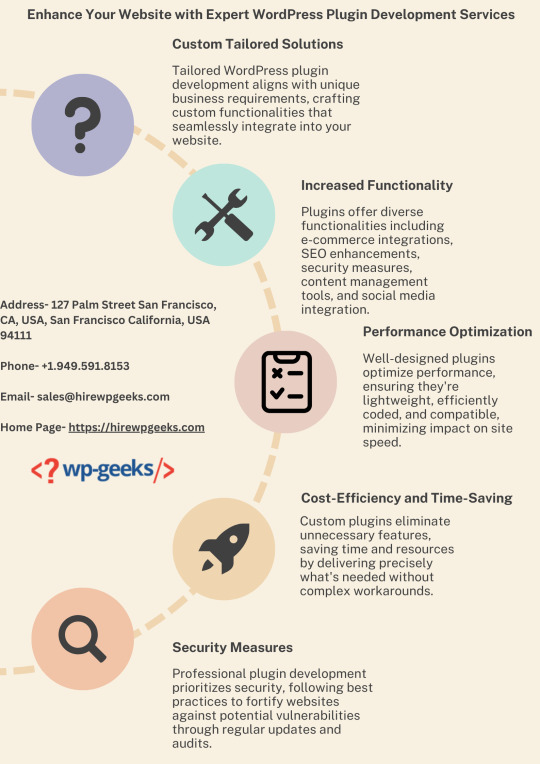
Elevate your website's capabilities with unparalleled WordPress Plugin Development Services offered by HireWPGeeks. Our expert team crafts bespoke plugins tailored to your specific needs, enhancing functionality and optimizing performance. Whether it's customizing existing plugins or creating new ones from scratch, our services ensure seamless integration and robust solutions for your WordPress site. Embrace innovation and empower your online presence with our exceptional WordPress Plugin Development Services today.
2 notes
·
View notes
Text
City Drive School
Driving School & Booking
A case study about the website built for City Drive School. Where we will deep dive into the build.

The Request
City Drive School wanted a place they could carve out a slice in in the Driving School Market, with well established compe.otitors. It was important to build a website that oozed quality and met the expectations of young, modern users.

Mobile Prioritised Design
We built City Drive School to work using smart responsive design that guides users through the company goals. We added sticky booking and call button on mobile devices, to increase bookings.
3 notes
·
View notes
Text
Why Is WordPress Development So Popular?
In this blog, we share the top website development company in India and also provide detailed information about why WordPress development so popular? it is user-friendly, cost-effective, customizable websites, SEO friendly, and also you can add plugins to increase functionality. If you want to create a WordPress website contact the best WordPress development company in Rajkot today!

#website development company in india#wordpress development company in rajkot#WordPress development#SEO-friendly#SEO friendly plugins#wordpress ecommerce plugins
2 notes
·
View notes
Text
10 Easy SEO Tips for WordPress Beginners (That Actually Work in 2025)
So, you’ve launched your WordPress site and you’re wondering… “How do I get more traffic from Google?”
The answer? Search Engine Optimization (SEO). But don’t worry you don’t need to be an expert to start seeing results.
Whether you’re a blogger, small business owner, or running an online store, these 10 beginner-friendly SEO tips will help boost your visibility on Google in 2025.
And yes, we'll also show you how using the right WordPress theme (like those from WPElemento) can make a huge difference.
1. Choose the Right SEO Keywords
Before you create content, know what your audience is searching for.
Tools to try:
Ubersuggest (free & beginner-friendly)
Google Keyword Planner
Ahrefs Free Keyword Generator
👉 Look for long-tail keywords like:
“best WordPress themes for small business”
“how to improve WordPress site speed”
“affordable SEO tools for beginners”
Pro Tip: Focus on keywords with low competition and high intent.
2. Install an SEO Plugin
This is a must for WordPress beginners.
The two best free plugins are:
Yoast SEO
Rank Math
These tools help you:
Optimize title tags and meta descriptions
Create XML sitemaps
Manage canonical URLs
Improve content readability
3. Use a Fast, SEO-Friendly WordPress Theme
Your theme affects your site’s speed, code structure, mobile usability all ranking factors.
🎯 Recommended: WPElemento WordPress Theme Bundle
This bundle includes dozens of responsive, fast-loading themes across niches like:
Business
eCommerce
Education
Photography
Non-profits
All WPElemento themes are:
Built with clean code
Elementor-compatible
Mobile-optimized
Designed for SEO success
4. Optimize Your Site Speed
Google loves fast websites. So do your visitors.
Quick ways to boost speed:
Use a caching plugin (like WP Rocket or W3 Total Cache)
Compress images with ShortPixel or TinyPNG
Choose a fast web host
Minimize external scripts
🛠️ Already using a bloated theme? Switch to one from the WPElemento bundle to improve load times.
5. Write Quality, Human-Friendly Content
Forget stuffing keywords. In 2025, Google prefers content that helps real people.
✍️ Writing Tips:
Use headings (H1, H2, H3) to structure content
Answer questions directly
Keep paragraphs short and readable
Add visuals: images, infographics, and videos
Use internal links to your other pages
6. Make Your Site Mobile-Friendly
With over 60% of traffic coming from mobile, your site must be responsive.
How to check?
Use Google’s Mobile-Friendly Test
Preview your site on various screen sizes
💡 Good news: Every WPElemento theme is mobile-optimized out of the box.
7. Use SEO-Friendly URLs
Keep your URLs short, descriptive, and keyword-rich.
❌ Example of a bad URL: yourwebsite.com/page?id=37482
✅ Example of a good URL: yourwebsite.com/seo-tips-for-wordpress
To fix this:
Go to Settings → Permalinks in WordPress
Choose “Post name” as your default structure
8. Add Alt Text to All Images
Alt text helps Google understand your images. It’s also important for accessibility.
When uploading an image:
Add a short, keyword-rich description in the "Alt Text" field
Keep it relevant (don’t keyword stuff)
Example: Alt text: “Business website WordPress theme by WPElemento”
9. Submit Your Site to Google Search Console
If you want to appear in Google, let them know you exist!
Head over to Google Search Console, add your site, and:
Submit your sitemap (created by Yoast or RankMath)
Monitor which keywords bring traffic
Fix crawl errors
It’s free and gives you real data on how Google sees your site.
10. Keep Updating and Improving
SEO isn’t one-and-done. Keep your site fresh by:
Updating outdated posts
Fixing broken links
Adding new content regularly
Upgrading to better-performing themes (again, check WPElemento)
Final Thoughts
SEO may sound technical, but the basics are simple:
Choose good keywords
Write helpful content
Optimize your speed and design
Stay mobile-friendly
Use the right tools (and the right theme)
Start with the foundation: your WordPress theme. Explore the full range of fast, SEO-ready options in the WPElemento WordPress Theme Bundle and give your website a real edge in 2025.
0 notes